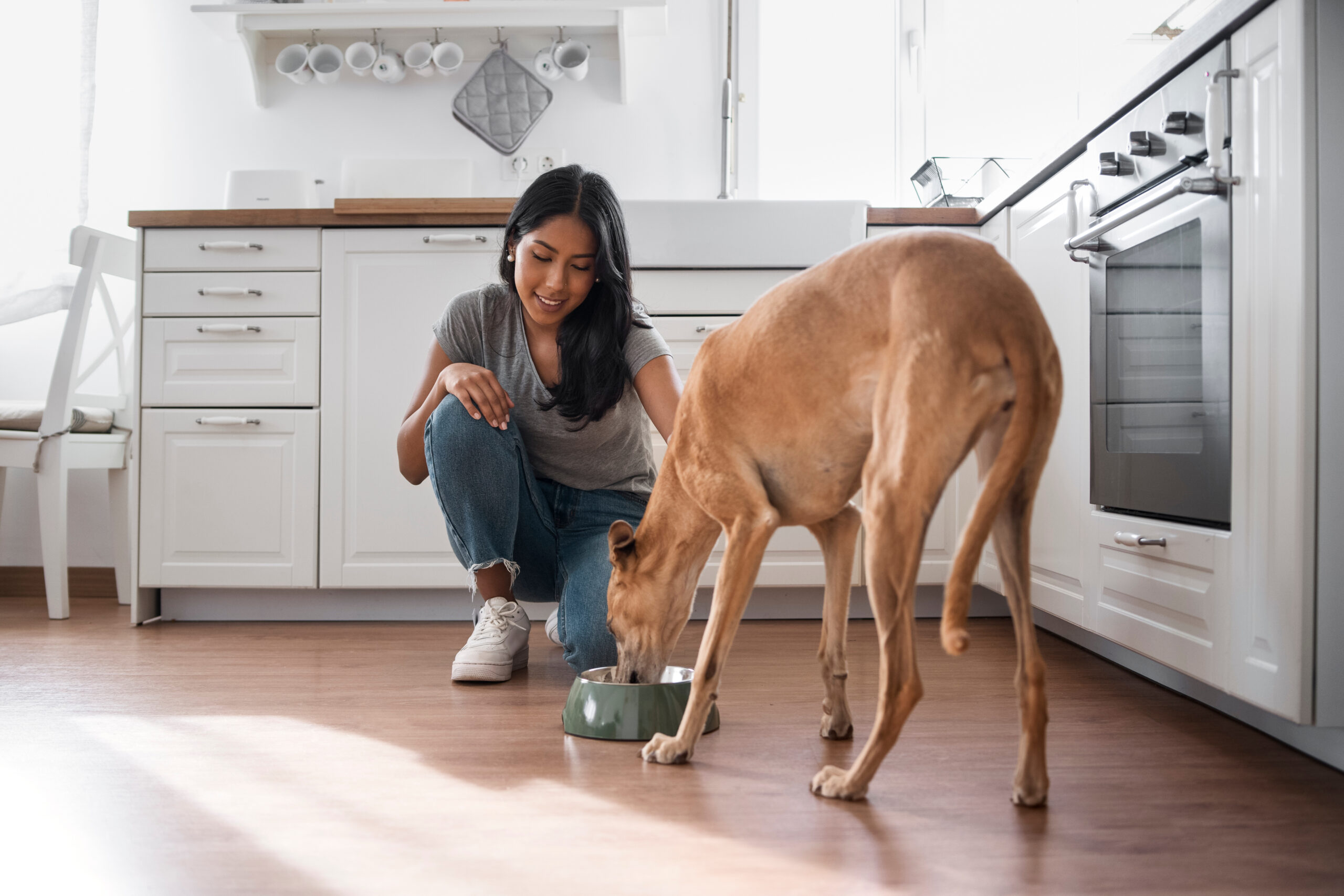29 October 2025
What is Rotational Feeding?
Imagine eating the same meal every single day—sounds simple, right? Many pets happily do just that, and if your pet loves their food, stick with what works. But know that rotating recipes occasionally can introduce new nutrients and flavors that keep them eager for every meal.
That’s the idea behind rotating foods for pets. Rotational feeding is the practice of regularly rotating your dog or cat’s food—changing the protein source, and sometimes even the recipe type—to promote better nutrition, reduce food sensitivities, and keep mealtime exciting.
At The Pet Pantry, we call it a “tail-wagging twist on nutrition.” We’ve seen firsthand how adding healthy variety can transform a pet’s appetite, digestion, and overall vitality.
Why Rotational Feeding Works
1. It Helps Prevent Food Sensitivities
Feeding the same protein every day for months or years can cause your pet’s immune system to become overexposed to that ingredient. Eventually, they may develop sensitivities or mild allergic reactions—itchy skin, ear issues, or upset tummies.
By rotating recipes (for example, from Chicken & Rice to Lamb & Rice, then to Salmon & Sweet Potato), you reduce that constant exposure and give your pet’s system a well-deserved break.
2. It Supports Better Gut Health
A healthy gut thrives on diversity. Just as humans benefit from varied diets, pets do too. Rotational feeding introduces new nutrients, fibers, and probiotics that support stronger digestion and a balanced microbiome.
All Holistic Choice® recipes are made with natural prebiotics and probiotics, which means your pet’s digestive system can easily adjust to recipe rotations.
3. It Keeps Mealtime Exciting
Even the most loyal eater can get bored. Rotating flavors adds an element of surprise that keeps tails wagging and whiskers twitching. A word of caution, changing foods too frequently can make for a picky eater.
If your dog or cat has suddenly become “picky,” a simple switch to a new recipe often reignites their enthusiasm. The slow-cooked aroma of our Holistic Choice® foods doesn’t hurt either!
4. It Encourages Complete Nutrition
Each protein offers unique nutritional benefits, such as amino acids profile:
- Chicken & Turkey provide lean, highly digestible protein for strong muscles.
- Lamb & Rice are gentle on sensitive stomachs.
- Salmon & Sweet Potato deliver omega fatty acids for skin and coat health.
- Buffalo & Duck offer novel proteins ideal for rotation and variety.
When you rotate, you give your pet the best of every bowl—a more balanced nutritional profile over time.
How to Start Rotational Feeding
Step 1: Choose Compatible Recipes
Start with recipes that share similar base ingredients (like grains or carbs). For example, switching between Holistic Choice® Chicken & Rice and Lamb & Rice is an easy first step. Once your pet adjusts, you can introduce grain-free options like Salmon & Sweet Potato.
Step 2: Transition Gradually
When introducing a new food, mix it in slowly:
- Days 1–3: 75% old food, 25% new food
- Days 4–6: 50/50 mix
- Days 7–9: 25% old food, 75% new food
- Day 10+: full transition
This gradual approach allows your pet’s digestive system to adjust comfortably.
Step 3: Monitor & Observe
Watch for changes in appetite, stool consistency, or energy levels. Most pets adapt quickly, but if you see persistent digestive upset, pause and consult your vet—or reach out to The Pet Pantry team for personalized guidance.
We love helping pet parents fine-tune their rotation plans. After all, every pet is unique!
Rotational Feeding for Cats
Cats can absolutely benefit from rotational feeding, too—though they can be a bit more… opinionated.
Many indoor cats grow bored with the same recipe and start eating less. Rotating between protein sources (like Chicken, Salmon, and Duck & Herring) can renew their interest and prevent “food fatigue.”
Cats also benefit from variety in texture—try mixing in a wet food topper or alternating dry kibble recipes for a more enriching dining experience.
Common Questions About Rotational Feeding
“Can I rotate between brands?”
It’s best to stick with one trusted brand that maintains consistent nutritional standards and ingredient quality. That’s why Holistic Choice® is ideal—every recipe is formulated with the same nutrient balance and slow-cooked method, so transitions are smoother.
“How often should I rotate?”
There’s no strict rule, but every 16 weeks is a good rhythm. Some pets do well changing recipes more or less frequently. Listen to your pet—they’ll tell you!
“Will changing foods upset my dog’s stomach?”
Not if you do it gradually and stick to quality, natural recipes like ours. Each Holistic Choice® formula is designed for easy digestibility, made with prebiotics, probiotics, and balanced omegas.
Why The Pet Pantry Makes It Easy
We’ve been helping local pets in the Triangle and Triad thrive for nearly 20 years, and rotational feeding has become one of our favorite success stories.
Here’s how we make it simple:
- Personalized Guidance: Our team helps choose the right recipes and timing for your pet’s needs.
- Free Samples: No risk. Try new recipes before you buy.
- Free Delivery: Triangle & Triad, NC
A Sample Rotational Feeding Plan
Here’s an example rotation for a healthy adult dog:
| Month | Recipe | Benefit |
|---|---|---|
| Grain-Inclusive Diet | ||
| Jan–April | Chicken & Brown Rice | Lean protein, high digestibility |
| May–August | Lamb & Brown Rice | Gentle on sensitive stomachs |
| Sept–Dec | Salmon & Brown Rice | Skin, coat, and joint support |
| Grain-Free Diet | ||
| Jan–April | Grain-Free Buffalo & Duck | Novel proteins for variety |
| May–August | Grain-Free Chicken/Turkey/Salmon | Great for active dogs |
| Sept–Dec | Grain-Free Salmon & Sweet Potato | Omega-rich winter coat boost |
Switch up as needed based on your pet’s taste and lifestyle.


